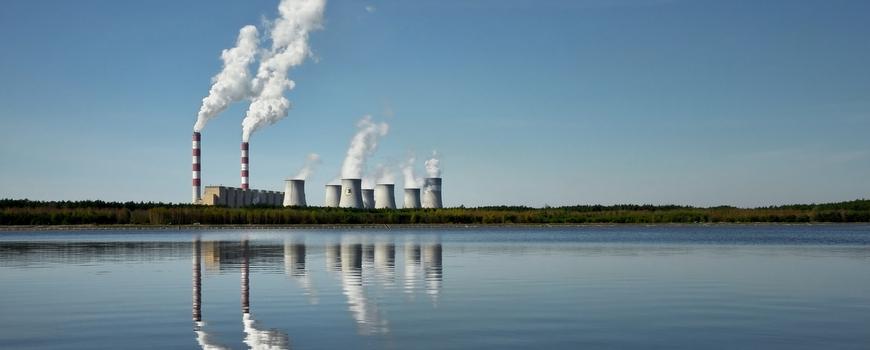
Notwithstanding the fact that there has been no international agreement to extend or replace the Kyoto protocol, the EU is pressing ahead with a unilateral tightening of emissions of greenhouse gases (GHGs). This will have impacts for many areas of economic activity in Europe including energy-intensive industry and power generation. Emissions from these sectors are already controlled under emissions trading legislation. From 2013 onwards this will be regulated by means of an amendment to the original Emissions Trading Directive 2003/87/EC by means of Directive 2009/29/EC. This new compliance period is commonly referred to as ETS Phase III and will run from 1 January 2013 until 2020.
Incumbent industries that already fall within the EU emissions trading scheme (ETS) will face significant reductions in the number of allowances that they will receive for free under phase III. For certain industries the number of free allowances will reduce progressively each year from 2013 to 2020.
The phase III rules are designed to deliver a 21% reduction below the 2005 emissions from sectors covered by the EU ETS by 2020.
Impacts on industry
The European Commission (EC) is concerned about the potential impacts of the ETS on the competitiveness of European manufacturing industry. If equivalent carbon costs are not applied in competitor economies, then there could be a flight of investment to countries with no internalised costs of carbon. Of course, the relative contribution of carbon costs to the overall cost base, and hence its relative weight as a factor in investment decisions, varies from sector to sector.
The Commission has nominated a range of industry sectors that it considers most at risk of such investment flight. This risk is referred to as the carbon leakage risk. The concern is that increased production levels outside the EU could result in higher emissions than if the production occurred in Europe. Hence, while the EU ETS could well contribute to reducing Europe’s industrial emissions it could actually contribute to a net increase in global emissions.
The relevant industrial sectors are set out in Commission Decision 2010/2/EU (and amendments) and while they will be awarded a lower allocation of allowances in 2013 than heretofore (e.g. in period 2008-2012), their new allocations will be fixed at 2013 levels out to 2020. In contrast, sectors not deemed to be at risk will experience allocation reductions in 2013 and will also face further year on year allowance reductions to 2020. In Ireland, the at risk sectors include cement and lime manufacture, distilling of alcohol, oil refining and alumina production, among others. The at risk sector lists will be periodically reviewed by the Commission.
Mechanism for allowance allocations
During the 2008-2012 compliance period, individual Member States could allocate allowances for individual sites using a national allocation plan based on methodologies laid down in Europe. The rationale for the national allocations had to be approved at EC level.
In phase III this will not be the case. In Ireland, the allocations to industry will be made in a two step process. The Environmental Protection Agency (EPA) has already collected baseline emissions data from 77 industrial and services sector sites and from 18 power stations, and has prepared indicative emission allocations for each site for 2013 to 2020. This list of proposed allocations is known as the national implementation measures (NIMs); it was submitted by the EPA to the Commission in December 2011. NIMs from all Member States will now be aggregated and analysed in Brussels.
The Commission will assess the extent of the current GHG emissions under two recent baseline periods and will allocate allowances to all ETS sites across the EU for each year from 2013 to 2020:
- Industries in at risk sectors will receive allocations of free allowances for 2013 based on their selected baseline-year emissions. These allocations will be fixed at the same level out to 2020 as a concession to the carbon leakage risk.
- Industries in other sectors will receive allocations of free allowances in 2013 based on their baseline-year emissions. However, their allocations will reduce annually on a glide path out to 2020.
In all cases where a site’s emissions in any year exceeds its free allocation for that year, the operator will have to purchase additional allowances on the carbon markets and surrender the number of allowances to match their emissions. The current market price is €9.5 per tonne CO2 but this is expected by many commentators to rise as the number of free allocations issued by the Commission reduces out to 2020. An ESRI paper published in November 2011 projected a price of €33.5 per tonne CO2 in 2020.
The proposed free allocations to the Irish industrial and services sector for 2013 (as set out in the EPA’s submission to Brussels) amounted to 5.87 million tonnes CO2 across 77 sites.
Power generation sector
In Ireland, electricity generation stations account for by far the largest proportion of GHG emissions from sites in the scheme. Their emissions are almost twice that from industry. From 2013 onwards there will be no free allowances for power generation. Generators will be required to purchase 100% of the allowances needed to match their emissions each year.
At a grid average emission rate of 528 gCO2 per kWh and assuming a current price of ~€10 per tonne CO2, the cost of compliance to Irish electricity generators would be about €5.3 per MWh. This is equivalent to about 3% of the retail price of electricity.
